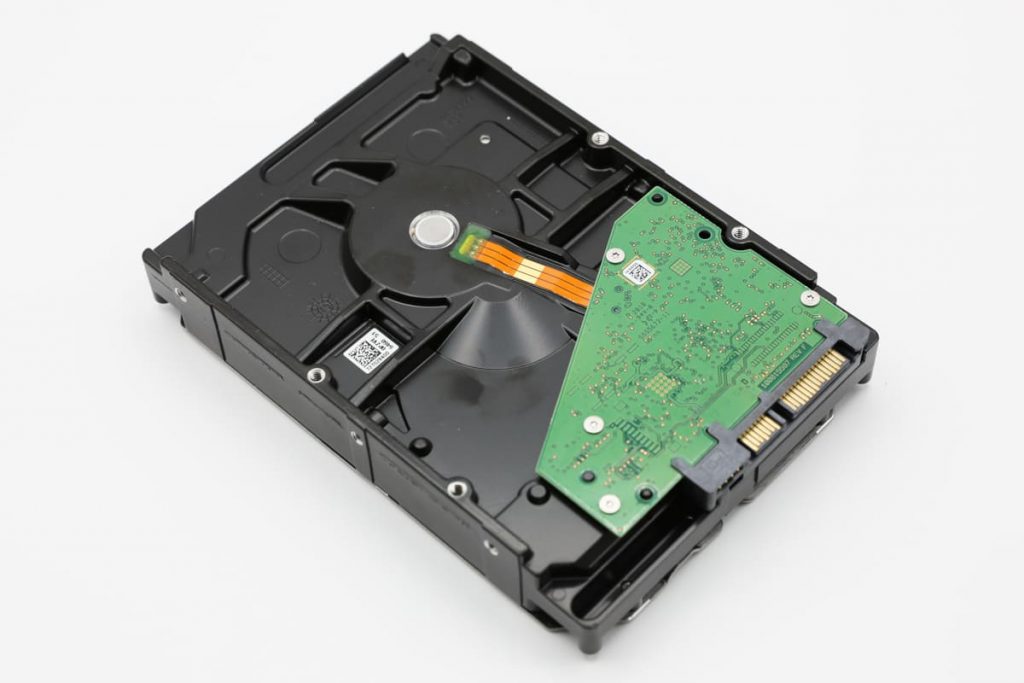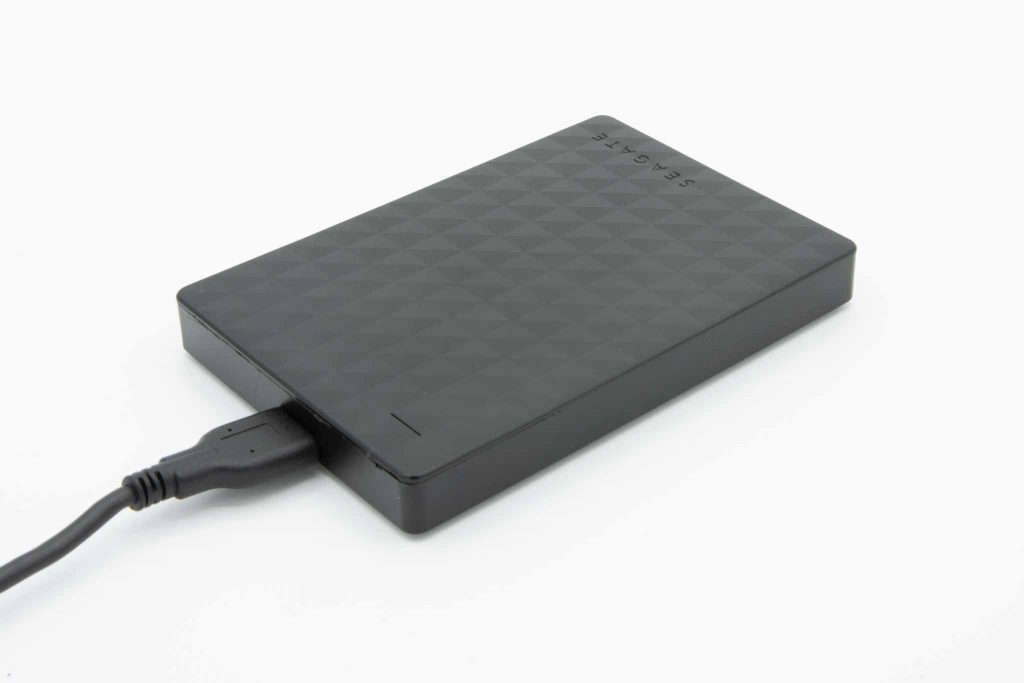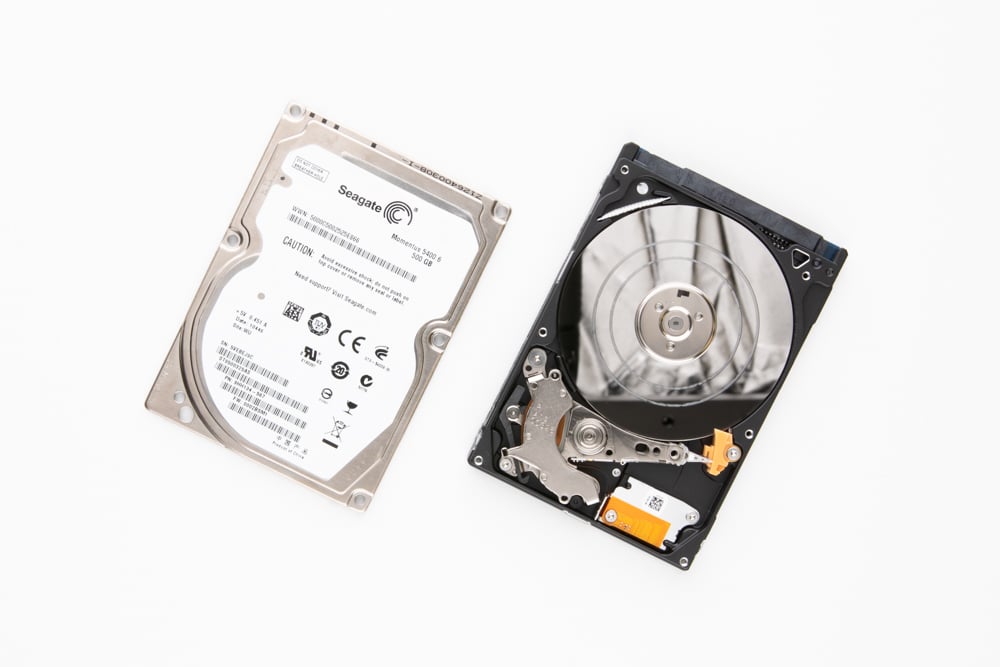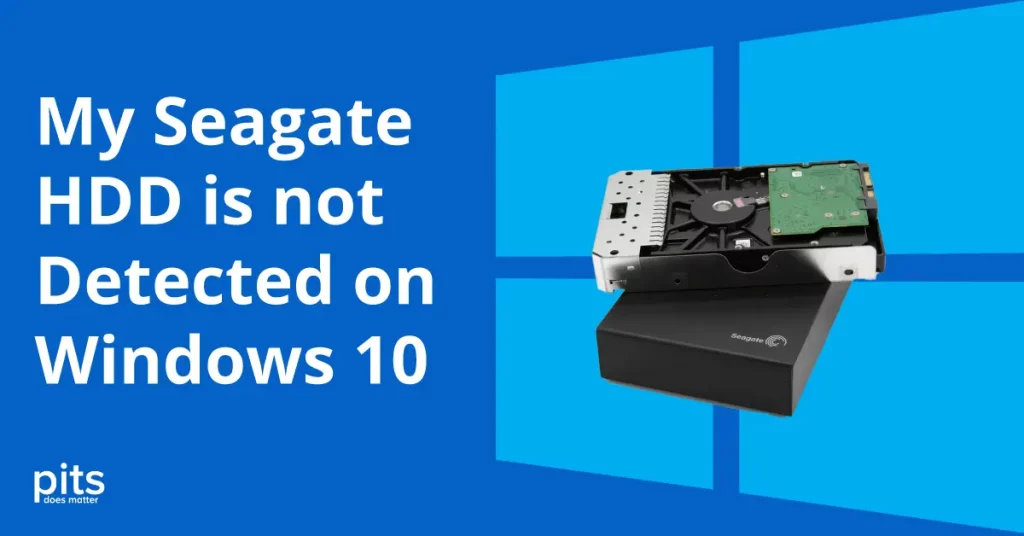Many users encounter the common challenge of dealing with the frustration of a Seagate HDD that is not detected. Whether due to hardware or software issues, the risk of data loss emphasizes the need for a prompt solution.
This guide will explore the common causes of Seagate HDD detection problems and provide initial DIY troubleshooting steps. Additionally, we will ultimately recommend a reliable solution: PITS Global Data Recovery Services. Discover how these experts can effectively handle Seagate HDD recovery, ensuring the security and integrity of your important data.
Possible Reasons for a Seagate Hard Drive not Showing up
If your Seagate hard drive isn’t showing up, there could be several reasons for this issue. Firstly, it’s essential to check the physical connections. Ensure your computer’s hard drive cables are securely plugged in at both ends. Moreover, it’s important to examine the power source to verify proper functionality.
If the drive is externally powered, confirm the power adapter’s functionality. For drives powered via USB, attempt connecting to an alternate port or using a different cable to troubleshoot potential connection issues.
Another possibility is that the hard drive encountered a driver or file system problem. You can check this by accessing the Disk Management tool in Windows.

It might need to be assigned a drive letter or formatted if it appears here. If the drive fails to appear entirely, it may indicate a significant hardware problem like a malfunctioning controller or damaged sectors. Consider seeking professional data recovery services for crucial data retrieval in such cases.
New Seagate HDD not detected - Troubleshooting
Before delving into professional solutions, it’s worth exploring some DIY troubleshooting steps to address the common reasons behind your Seagate HDD not being detected. By taking a few simple measures, you may be able to resolve the issue without resorting to more advanced interventions. However, it’s crucial to approach these steps with caution, especially when dealing with potential hardware problems. Here are some straightforward actions you can take to troubleshoot the problem and potentially regain access to your data.
Faulty Cable Connections
- Inspect the connection between the Seagate HDD and your computer. Loose or damaged cables can disrupt data transfer and lead to detection issues.
- Ensure the USB or other connecting cables are securely plugged into the hard drive and the computer.
Power Supply Problems
- Verify that the Seagate HDD is receiving adequate power. Inadequate power supply can result in erratic behavior or prevent the drive from being recognized.

USB Port Issues
- Try connecting the Seagate HDD to different USB ports on your computer. A malfunctioning USB port might be the reason for the detection of drive failure.
- Avoid using USB hubs, as they can sometimes interfere with the proper functioning of Seagate external hard drives.
Outdated Drivers
- Check and update the device drivers related to your Seagate HDD. Outdated or incompatible drivers can hinder the communication between the hard drive and the computer.
- Visit the official Seagate website or use device manager tools to ensure you have the latest drivers installed.
Corrupted Files or File System
- Examine the file system of the Seagate HDD for potential corruption. A corrupted file system can impede the drive’s ability to be recognized by the operating system.
- Run disk-checking utilities or file system repair tools to address and fix any detected issues.
Software Conflicts or Malware
- Investigate the possibility of software conflicts or malware affecting the Seagate HDD’s detection. Certain applications or malicious software can interfere with the normal operation of external drives.
- Perform a thorough antivirus scan and temporarily disable non-essential background applications to rule out these potential issues.
Cautionary Note
- While these DIY steps can resolve many common issues, exercise caution and avoid attempting DIY data recovery methods if you suspect physical damage or major issues.
- Opening the hard drive or using unverified recovery software without professional guidance may lead to further damage and data loss.
"*" indicates required fields
Seagate HDD Detected But Not Showing
If your system detects your Seagate HDD, but the drive is not showing visibly, it’s a perplexing situation. This issue often arises from file system errors or corrupted partitions. Begin by checking the Disk Management utility on Windows to see if the drive appears there.
If it does, the problem may be assigning a drive letter or repairing the file system. However, exercise caution in attempting these fixes, as improper actions could exacerbate the problem. In cases where the drive is not visible even in disk management tools, it might indicate a more intricate issue requiring professional expertise. Consider seeking assistance from data recovery services like PITS Global to navigate these complexities and ensure a secure and efficient resolution.
Seagate external HDD not detected - DIY Risks
Attempting to resolve Seagate HDD detection issues through DIY solutions carries inherent risks due to the delicate nature of hard drives. Without professional expertise:
Risk of Further Damage: The internal components of hard drives are sensitive and easily susceptible to damage. DIY attempts may inadvertently worsen the situation, leading to irreversible harm.
Lack of Specialized Tools: Professionals use specialized tools for intricate diagnostics and repairs. DIY enthusiasts often lack access to these tools, limiting the accuracy and effectiveness of their interventions.

Complexity of Data Recovery: Data recovery involves complex processes that demand a deep understanding of file systems and drive structures. DIY efforts may not navigate these complexities, jeopardizing successful data retrieval.
Voiding Warranty and Professional Assistance: Opening the hard drive casing might void warranties, and DIY actions may hinder the ability of professionals to later assist with recovery. It’s crucial to prioritize caution and seek expert help from the outset.
In light of these limitations, entrusting Seagate HDD recovery to professionals at services like PITS Global ensures a higher likelihood of success while safeguarding the integrity of your valuable data.
How PITS Global Data Recovery Services Can Support
Engaging PITS Global for Seagate HDD recovery is a streamlined process. By contacting their expert team, you thoroughly assess your hard drive’s condition. This initial evaluation informs the personalized recovery plan tailored to your specific data loss situation.
Professional data recovery offers distinct advantages. PITS Global’s experienced technicians employ state-of-the-art facilities and cutting-edge tools, significantly increasing the likelihood of a successful recovery. Our expertise extends beyond mere retrieval, encompassing a comprehensive analysis of your Seagate HDD to pinpoint and address underlying issues.
Data confidentiality is a paramount concern for PITS Global. By entrusting your recovery to professionals, you ensure that sensitive information remains secure. This commitment to privacy is reinforced by stringent security measures implemented at every stage of the recovery journey.
In summary, choosing PITS Global Data Recovery Services enhances the probability of reclaiming your valuable data and ensures a confidential and expertly guided recovery process.
Frequently Asked Questions
Why is my Seagate hard drive not getting detected?
If your Seagate hard drive is not detected, the issue could be due to various reasons, including faulty cable connections, power supply problems, or outdated drivers. To address this, first, check the cables, try different USB ports, and ensure a stable power supply. If these DIY steps don’t resolve the problem, it’s advisable to seek professional assistance from data recovery services like PITS Global to diagnose and address potential hardware or software issues.
How to fix an undetected Seagate external hard drive?
If your Seagate external hard drive is undetected, check cable connections, try different USB ports, and verify the power supply. If these steps don’t resolve the issue, avoid attempting DIY fixes, which may lead to further complications. It’s good to enlist the services of professionals like PITS Global, who can provide a thorough assessment and implement appropriate solutions for a reliable recovery.
Why is my Seagate external drive beeping and not showing up?
A beeping Seagate external hard drive typically indicates a mechanical failure or issues with internal components. This could be a critical situation, and attempting DIY solutions may worsen the problem. Instead of risking further damage, contacting professionals like PITS Global Data Recovery Services is advisable. Their expertise in handling mechanical failures and intricate hardware issues increases the chances of successful recovery without compromising data integrity.
How do I recover my Seagate external hard drive?
For Seagate external hard drive recovery, it’s crucial to prioritize caution and avoid DIY attempts, especially if the drive is physically damaged. PITS Global Data Recovery Services offers a specialized approach, leveraging advanced tools and expert knowledge to recover data from various issues.
